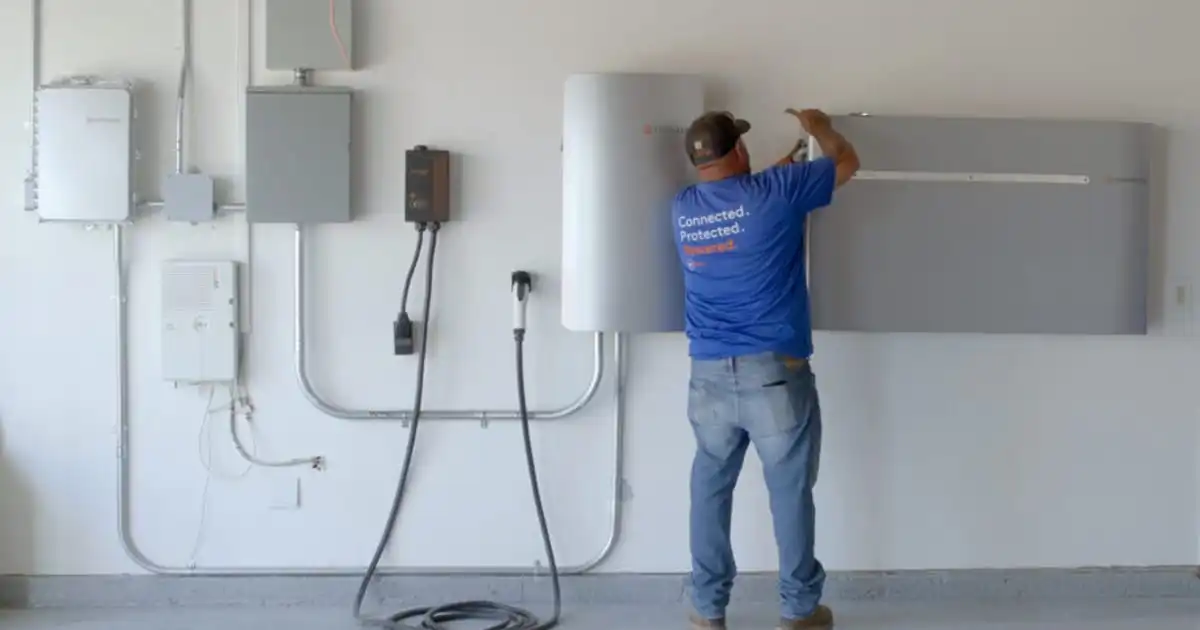republiQan regulators cut incentives.
Seriously, leaving that part out defeats the purpose of the article. News media is so up their own ass (and by extension, their republiQan overlords’ asses) that they refuse to speak the words that matter.
These are all Democratic appointees
Electing Democrats is necessary, but not sufficient, to get where we need to go.
Can’t have those PG&E dividends crashing.
Can’t have anything cutting into corporate utility profits!
Well, of course. We can’t let people make their own electricity and cut into the privately owned, for-profit utility company profits!
Rates were rising for low-income people who would never have been able to avail themselves of these incentives partially as a result of some of the incentives. Requiring utilities to buy the electricity at the same rate they sell it at, rather than the commercial rate, was never going to be sustainable in the long-run without causing massive cost increases for those who can afford them the least.
Yes, but this is about an additional cut - for the few hours per year when having additional power from peoples’ batteries means that no new generation capacity is needed. Avoiding those costs benefits everybody, and deciding not to compensate folks for it isn’t a good move.
Gotta suck that corpo cock
I write this from a place where electricity is provided by a crown corporation (government ran corp - SaskPower) and also have a net-zero rooftop solar system, and small scale solar like this is quite inefficient compared to grid-scale stations. I very much agree that there is some sovereignty in producing one’s own power, however, grid-scale generation is much more effective, both in cost and generation efficiency.
SaskPower has really had no recent incentives for rooftop solar and they only pay about half price for power returned to the grid, effectively discouraging widespread development of rooftop solar.
They have instead proposed an interesting alternative where a homeowner could purchase a portion of a larger scale facility and be credited for the electricity that portion generates. Crowd-funded electricity generation, essentially. This is, of course, much more attractive when the provider is essentially a company owned by the public, not a private, profit seeking entity. But, I think it could be a promising alternative to enable homeowners to offset their electricity bills while being a better option for the overall grid.
Larger scale is cheaper, but rooftop avoids the need for long-distance transmission [in short supply right now in California] and limits the need to convert farmland into solar
Good point, I didn’t consider the space limitations California would have.
That’s true. The system can be far more robust if its decentralized. Even living in a place with cheap electricity I still plan on getting panels in the future.
small scale solar like this is quite inefficient compared to grid-scale stations.
grid-scale generation is much more effective, both in cost and generation efficiency.
Can you explain a bit better on the magnitude of these differences and why they exist? Thx
A couple things to add to sonori’s reply, the system efficiency also goes up when you can use higher capacity inverters. Essentially, one grid-scale facility (say, 100 MW) will have far fewer inverters than 100 MW of rooftop systems, meaning less efficiency loss.
While larger facilities can be optimized for azimuth and sun angle or with tracking, rooftops are often not optimally aligned, leading to a decrease in capacity. Sure, you could add tracking to your residential system, but that’s a significant cost that many homeowners won’t see the benefit of. There might also be obstacles that shade a residential system, which is often addressed when selecting sites for larger systems.
I’m not disagreeing with anything you’ve said, but there is a bit of nuance on optimal angle. I’m also in SK (about 50.7 degrees), and when I was looking at putting up panels, it was cheaper to throw a couple of extra panels up than to modify the install for “optimal fixed angle”.
Obviously, starting from scratch, you’d be foolish to not include “optimal fixed angle” or maybe even a manually operated dual-angle system that has a “summer position” and a “winter position”. For my install, a dual-angle install would have required the same number of panels as an optimal fixed angle. I would have got a larger margin of overproduction, but not by enough to eliminate a panel.
A lot of what I see on solar panels is still stuck using the same analyses as when they were less efficient, more sensitive to clouds, and more expensive. It wouldn’t surprise me to learn that even large scale installations would be better served by eliminating the expense and maintenance costs of tracking instead of pushing for maximum performance.
(Note: we didn’t ever get the install, because we couldn’t get financing, even when SaskPower was still doing full retail buyback.)
Yeah, standard installations will often be cheaper than a customized mounting. I’m at 52.9 and have a rooftop system with two arrays directed SW and SE because of rooflines (sized so the house is net-zero - 39 panels for 14 kW which gets me about 15,000 kWh annually), but I’d definitely go ground mount with a summer/winter position rack if I were to do it again. I work a bit with simplified PV modelling now and am disappointed that I didn’t know more sooner, probably would’ve saved quite a few dollars.
We also did an early feasibility study for a 10 MW farm and did find that tracking was marginally better, even including maintenance costs, but that does introduce the risk of labour availability and cost fluctuations that isn’t there on fixed mount. Overall, the project wasn’t feasible with the rates SaskPower pays.
Our initial plan based on my research was a ground system, not a roof system. South instead of southwest, fewer trees in the way, easy manual angle adjustment, easier to clear snow.
That would have saved us at least one panel and made it easier to add or replace panels.
The “wasted space” would be suitable for storage of various yard tools and equipment or a slightly taller mount might have made a nice shaded patio.
According to the contractors, the cost would have been substantially higher than a roof because of the difference in engineering costs and the legal requirement for fencing. I’ve since seen enough ground installs to think that the engineering and fencing requirements were not legitimate. I haven’t seen a single fenced installation and the support structures all look enough alike that I suspect the engineering is as close to a rubber stamp as a roof install.
We’re retired now. Without substantial grants, the window of opportunity has passed. With what I’ve learned in the last few years, I suspect that a ground mount would have actually saved us enough money to fit our line of credit instead of having to go hat in hand to the bank.
Oh well. Next up is heat pump. A preliminary look at federal funding makes me think that we can manage the capital outlay, leaving our pellet stove for just the coldest days.
There are definitely differences in installation, like piles instead of roof brackets, but I don’t imagine there’d be too big a difference in cost as long as there was local equipment to drill for the piles. And yes, I believe fences are only needed for larger installations.
Heat pumps are much more efficient than resistive electric heat, but you won’t save utility bills if you already have natural gas heat. Right now, electricity is about 9x more expensive for the same unit of heat compared to NG. I’d otherwise recommend it if you value emissions reductions over costs, though.
Natural gas is not available to us.
Our residential heat (900 ft² mobile home) is a 20-year old pellet stove with occasional use of a space heater in the opposite end of the building. There is no evidence that it’s on the way out, but it is 20 years old. We use 150-180 40lb bags of pellets to the tune of $1300-$1500 per year, plus the power used by the stove.
My shop (250 ft²) gets enough heat from occasional use of an external wood-fired rocket stove with heat exchanger for 3-season use. On colder days, I add in the overhead 750/1500 watt electric radiant heater so that I don’t have to wait 3 hours for the shop to come up to temperature, but I try to not use the shop when it’s colder than about -10C.
My analysis suggests that I can save at least $1000/year on pellets and eliminate the use of space heaters and rocket stove while also making it much easier to heat the shop when I need it. $1000/year (really, 6-7 months) goes a long way to making up the difference between current electrical use and expected electrical use.
And even if I’ve miscalculated, we can afford to pay a bit more to reduce wood use and resistive heating. One thing I’ve learned is that the best pellet stoves still put out more particulates than I’d like, and the rocket stove is worse. (Although the rocket stove is far better than the a campfire and people go through a lot more wood for their campfire than I use in the rocket stove.)
Republicans are a danger to the human race. Why is this shit allowed to continue?
Unfortunately, the California Public Utilities Commission consists entirely ofDemocratic appointees
It takes more than just electing Democrats to win, even when that’s a necessary precondition for a positive outcome.
it should be illegal to generate power on residential or commercial parcels. California is doing the right thing by disincentivizing it. Large, privately owned, power providers can self-regulate which then regulates all production
it’s good for everyone except the rich and greedy who can afford their own rooftop array
You’re confusing upper-middle class with rich. Also, many middle class people finance their rooftop solar and these incentives make it more affordable.
“Upper middle class” Californians are the rich, foo
I’ve always been a little unclear on this. At around what yearly income or total net worth in 2023 would you say someone is “rich”?
Lol they are not rich, they make more money but the higher cost of living eats that up quickly
people who cannot afford the cost of living are not the rich
I get the feeling that people who are actually rich have successfully tricked you into blaming the “not poor”.
Whose blaming anyone? For what?
I may be misinterpeting but the tone of your comments seems to imply frustration towards the financially secure. If this is true, I am suggesting that your frustration should be directed towards those who are actually wealthy and not those who have enough money to buy a house and solar panels.






